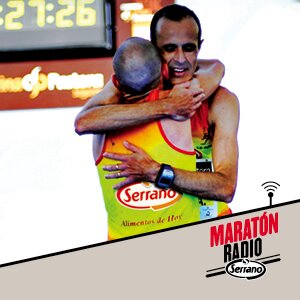Running Versus Walking: Which Loses More Weight?
When it comes to losing weight, you've probably wondered whether running or walking is the better choice. Running burns significantly more calories in a shorter amount of time, but walking offers its own set of benefits, especially for those starting out. So, how do you decide which activity suits your goals? The answer may not be as straightforward as you think, and the implications could change your approach to fitness entirely.
The Science Behind Weight Loss With Walking and Running
Understanding the science behind walking and running is important for optimizing an exercise routine aimed at weight loss. Both forms of physical activity contribute to fat loss, but there are notable differences in calorie expenditure and energy usage between them.
Walking, as a moderate-intensity exercise, can facilitate weight loss, particularly for those who are new to exercise. It poses a lower risk of injury and is often more sustainable for longer periods.
Running, in contrast, tends to burn approximately double the calories per minute compared to walking, which may lead to more significant weight loss for individuals who are able to maintain a consistent running routine.
In addition to aiding in weight loss, both walking and running offer cardiovascular benefits. However, walking has the added advantage of promoting muscle preservation and reducing cortisol levels, which can be beneficial for long-term weight management.
This is particularly important for individuals over the age of 40, as maintaining muscle mass and managing stress hormones are critical to preventing weight gain and maintaining overall health.
Calorie Burn: A Comparison of Walking and Running
Both walking and running are effective forms of exercise for burning calories, but they do so at different rates. For instance, a 160 lb individual running at a speed of 5 mph can burn approximately 606 calories per hour, whereas walking at a pace of 3.5 mph results in a calorie expenditure of around 314 calories per hour.
The higher intensity of running leads to a greater calorie burn both during the activity and after, due to the afterburn effect, which contributes to additional calorie expenditure post-exercise.
Walking, while lower in intensity, still serves as a beneficial form of exercise for weight loss and improving aerobic fitness.
Including elements such as increased speed or the use of resistance (e.g., walking on an incline or with weights) can enhance its effectiveness.
The Role of Intensity in Weight Loss
Intensity plays a critical role in the effectiveness of weight loss through exercise. When comparing different forms of exercise, running generally burns approximately double the calories compared to walking. This heightened intensity can be particularly advantageous for individuals with a higher body weight, as they may experience a more significant reduction in body fat.
Power walking, especially when incorporating intervals or an incline, can achieve calorie burn levels comparable to those of running. This highlights the importance of intensity in exercise, suggesting that it may be more beneficial than simply focusing on the duration of physical activity.
While engaging in moderate-intensity activities, such as walking, provides health and fitness benefits, increasing the intensity of workouts can enhance calorie expenditure. This can contribute to a more efficient approach to achieving weight loss goals.
It is essential for individuals to identify a level of intensity that they can sustain, as this will help maintain an active lifestyle over the long term. Balancing intensity and personal motivation is key in creating a successful weight loss strategy.
Benefits of Walking for Beginners
Walking is a practical entry point into fitness, particularly for individuals who aren't accustomed to regular exercise. As a moderate-intensity activity, walking can be easily integrated into the daily routines of beginners. Its low-impact nature makes it a suitable option, especially for those who may experience discomfort with higher-intensity workouts such as running.
Engaging in consistent walking has been associated with potential benefits for weight management, as it can contribute to calorie expenditure without imposing significant stress on the joints. Additionally, walking supports cardiovascular health; studies indicate that regular walking can enhance heart function and improve overall endurance over time.
According to the Centers for Disease Control and Prevention (CDC), adults should aim for a minimum of 150 minutes of moderate-intensity physical activity each week. Walking is an effective means to fulfill this guideline because of its adaptability to various fitness levels.
Furthermore, by incorporating walking into daily activities—such as taking stairs instead of elevators or walking during breaks—individuals can develop sustainable, health-promoting habits.
Running: Is It Worth the Risk?
For individuals considering an enhancement to their fitness regimen, running presents a valid option, although it carries its own associated risks. Research indicates that running can burn approximately twice the calories of walking, which may be appealing for those looking to lose weight.
However, it's important to recognize the potential for injury; studies suggest that around 50% of runners experience issues such as stress fractures and plantar fasciitis each year.
The high-impact nature of running can be particularly challenging for individuals with a higher body weight, who may experience a greater risk of injury while also seeing substantial weight loss relative to energy expended.
Prior to commencing a running program, it's advisable to evaluate one's individual health status and to consider any pre-existing injuries. Gradually increasing running mileage is also recommended to reduce the likelihood of injury and to better support weight loss and fitness objectives.
Combining Walking and Running for Optimal Results
While running is often perceived as the most effective method for weight loss, research indicates that combining walking and running can yield superior results. This hybrid approach enhances calorie expenditure by alternating between high-intensity running sessions and lower-intensity walking periods.
Power walking, in particular, can elevate heart rate to levels comparable to running while exerting less stress on the joints.
Incorporating resistance during walking or increasing the frequency of walking sessions throughout the day contributes not only to greater calorie burn but also to muscle strength development.
To optimize weight loss outcomes, it's advisable to gradually introduce running intervals into one's fitness regimen. This gradual transition can help reduce the risk of injury while effectively enhancing overall weight loss potential.
Building Muscle While Losing Weight
Building muscle while losing weight is a feasible objective that can be achieved through a structured approach. Strength training plays a crucial role in this process, as it helps to preserve muscle mass while facilitating fat loss. Engaging in activities such as walking or running, supplemented with strength exercises, can support this balance.
Increasing muscle mass not only contributes to better overall body composition but also elevates the metabolic rate. This means that, as muscle is gained, the body becomes more efficient at burning calories even during periods of rest.
To enhance outcomes, incorporating resistance training or performing incline walking can be beneficial. These methods not only aid in muscle development but also in its retention, which is particularly important for individuals over 40 or those experiencing menopause, as hormonal changes can affect muscle maintenance and fat distribution.
Managing Cortisol Levels: The Impact on Weight Loss
Managing cortisol levels is an important aspect of weight loss, particularly for individuals experiencing stress or hormonal shifts. Elevated cortisol levels can interfere with blood sugar regulation, which can complicate weight management efforts. Research indicates that elevated cortisol is associated with increased appetite and cravings, particularly for high-calorie foods, making it more challenging to lose weight.
Walking is a low-impact form of exercise that has been shown to reduce cortisol levels. Regular walking can help improve stress management by promoting the normalization of cortisol after stressors. This form of physical activity not only aids in stress reduction but also contributes to overall health improvements.
Incorporating walking into one’s exercise regimen may facilitate weight loss efforts by promoting a balanced approach to exercise intensity. While higher intensity workouts can be effective, they may also lead to increased cortisol levels if not managed properly.
Therefore, moderate forms of exercise, such as walking, can provide a beneficial alternative for maintaining hormonal balance and supporting weight loss goals.
Real-Life Success Stories: Transformations Through Walking
The journeys of individuals who've improved their lives through walking present evidence of the significant effects of this low-impact activity. Research indicates that regular walking, even at a moderate pace for approximately 30 minutes per day, can lead to notable weight loss and improved fitness levels due to the calories burned.
In comparative studies, participants often concluded that walking can result in favorable outcomes similar to or exceeding those from higher-impact exercise routines, particularly for those with joint concerns or mobility issues.
Furthermore, walking has been linked to enhancements in mental health and overall energy levels. Numerous studies suggest that physical activity, including walking, contributes to reduced symptoms of anxiety and depression, indicating a positive correlation between physical exercise and mental well-being.
The integration of walking with healthier dietary choices often results in a sustainable approach to fitness that supports joint health and overall quality of life. Thus, the evidence supports the idea that regular walking plays a critical role in achieving and maintaining health benefits.
Making the Right Choice: What’s Best for You?
Choosing an exercise routine that aligns with your goals is an important factor in your weight loss journey. Walking serves as an effective entry point for individuals starting from a low activity level. It can facilitate gradual weight loss and improve overall fitness when practiced consistently.
In comparison, running tends to burn more calories in a shorter period, potentially leading to quicker results for those who can manage the demands of higher intensity workouts.
When selecting between walking and running, it's essential to evaluate your personal preferences, current fitness level, and any pre-existing injuries that may affect your ability to perform certain exercises.
Maintaining an enjoyable and comfortable routine is crucial for adherence, as consistency is a significant factor in achieving weight loss goals.
Ultimately, incorporating either walking or running into your routine will be beneficial, provided there's a focus on consistent practice and gradual increases in intensity or duration over time, which are known to contribute to effective weight management.
Conclusion
In the battle of walking versus running for weight loss, both have their advantages. Running burns more calories faster, but walking is gentler and perfect for beginners. Mixing both can optimize your weight loss while minimizing injury risks. Remember, what's important is finding an activity you enjoy and can stick with long-term. So lace up your shoes and choose what feels best for you—whether it's a brisk walk or a vigorous run, consistency is key to success!
| Redacción Director: Redactor-Jefe: Redactor: Director Comercial: Diseño: |
Colaboradores Área de Entrenamiento: Jerónimo Bravo y Miguel Ángel Rabanal. Área de Material: Fernando Chacón y Kike de Diego Álvarez. Área de Salud: Enrique García Torralba y Doctor López Chicharro. Área de Nutrición: Viviana Loria Kohen. Área de Carreras: Ignacio Mansilla. Área de Trail: Miguel Caselles, Juan Antonio Alegre y Juanma Agejas. |










